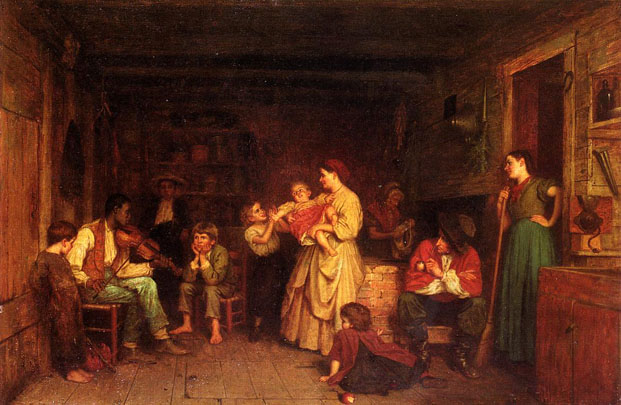 Martha Washington’s Booke of Cookery and Booke of Sweetmeats is a family cookbook that Martha compiled and used for fifty years. It contains more than five hundred recipes, mostly dating back to Elizabethan and Jacobean times, the golden age of English cookery. In her introduction to the Booke of Cookery, Karen Hesse explains some reasons why the art of home cooking has been neglected for so long by historians:
Martha Washington’s Booke of Cookery and Booke of Sweetmeats is a family cookbook that Martha compiled and used for fifty years. It contains more than five hundred recipes, mostly dating back to Elizabethan and Jacobean times, the golden age of English cookery. In her introduction to the Booke of Cookery, Karen Hesse explains some reasons why the art of home cooking has been neglected for so long by historians: Few scholars are cooks – and ever fewer cooks scholars. Perhaps this accounts for the fact that no other aspect of human endeavor has been so neglected by historians as home cooking.
I cannot help but feel that this neglect is also related to the ageless depreciation of the work of women. Yet since time immemorial – when not searching for food, making baskets and pottery, tilling the soil and tending livestock, spinning and weaving, and bearing and raising children, of course – women have been inventing and perfecting the art of cooking.
The importance of agriculture and the significance of the spice routes were always well understood by the historians...but the homely art of the hearth has never been worthy of the same study as are other disciplines.
Hesse’s points are well-taken and will hopefully help stimulate more research into the fascinating and FUN field of culinary history. In the meantime, if you'd like to get a sense of the type of recipes that are contained in Martha's cookbook, here's a quaint "receipt" titled, "To Season Apples for Puffs"
Take apples, pare & cut them in quarters, & core them, & put them into colde water; & set them on ye fire in a pan; let them boyle softly, then put them into a dish, & cover them over a chafing dish of coles, & put to it some slyced nutmegg, slyced giner, & 2 or three colves, some slyced orring & leamon pill candied, or citron pill & a little red wine. & sweeten them with sugar, & then put them into your puffs.
Now, you could try to make this recipe today, but, as Hesse explains, "Most apples nowadays disintegrate when boiled, no matter how softly." That said, a better bet might be to try this more recent recipe for Apple Turnovers from the Food Network's Ina Garten:
1 teaspoon grated orange zest
3 tablespoons freshly squeezed orange juice
1 1/4 pounds tart apples, such as Empire or Granny Smith (3 apples)
3 tablespoons dried cherries
3 tablespoons sugar, plus extra to sprinkle on top
1 tablespoon all-purpose flour
1/4 teaspoon ground cinnamon
1/8 teaspoon ground nutmeg
Pinch kosher salt
1 package frozen puff pastry, defrosted
1 egg beaten with 1 tablespoon water, for egg wash
Preheat the oven to 400 degrees F. Combine the orange zest and orange juice in a bowl. Peel, quarter, and core the apples and then cut them in 3/4-inch dice. Immediately toss the apples with the zest and juice to prevent them from turning brown. Add the cherries, sugar, flour, cinnamon, nutmeg, and salt.
Flour a board and lightly roll each sheet of puff pastry to a 12 by 12-inch square. Cut each sheet into 4 smaller squares and keep chilled until ready to use. Brush the edges of each square with the egg wash and neatly place about 1/3 cup of the apple mixture on half of the square.
Fold pastry diagonally over apple mixture and seal by pressing the edges with a fork. Transfer to a sheet pan lined with parchment paper. Brush top with egg wash, sprinkle with sugar, make 2 small slits, and bake for 20 minutes, until browned and puffed. Serve warm or at room temperature.
FOOD FACT: Other entries in Martha's Booke of Cookery include, "How to souse a pig of 3 or 4 shillings," To roste a shoulder of muton with blood," "To make a caule's foot pie," "To pickle cowcumbers," "To Stew Sparrows," and "To Make a Pigeon Pie." Oh my!!
Here's a brief excerpt from my Publishers Marketplace agent profile - and for more on my manuscript wish list and "How to Submit" click here!



